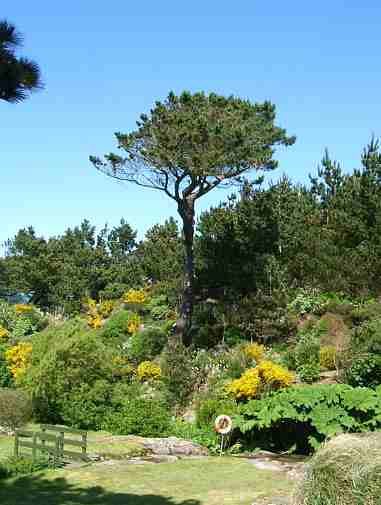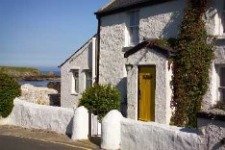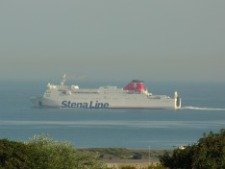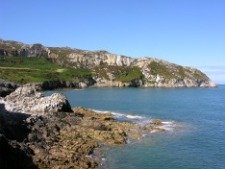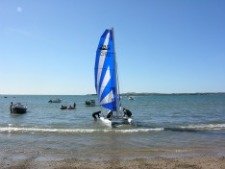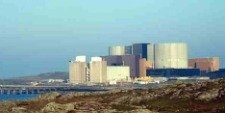|
Cestyll Garden, Anglesey
Discover the natural beauty of Cestyll Garden, hidden away on the North Anglesey Coast. Cestyll Garden was once home to the Hon. Violet Vivian who transformed the land into a home for some beautiful and interesting plant species.
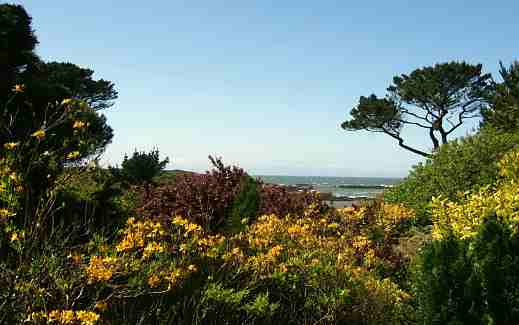
You have to time your visit well because the present owner, the nearby Wylfa Magnox Power Station, only opens the garden for three days every year. Yes, that's right; only 3 days! So, when I got to hear about it, I made sure to get up there and see for myself what others had recommended. Interested visitors gather at the Wylfa Power Station Visitors Centre, just off the A5025 outside Cemaes. You can't miss it, just follow those brown signs for Wylfa. The gardens normally open for the three days over the May Bank Holiday weekend. Telephone (01407) 711400 for more information.
See the Map for directions
A minibus took us a short distance - about 2 miles - along the narrow country lanes, brimming with wild flowers and hardy bushes. The day of our visit saw a strong northerly wind buffet the North coast, and what a backdrop to behold! "White horses" riding the turquoise Irish Sea and here we stood in thick green pasture, ready to enter with great expectation. The Royal National Lifeboat Association (RNLI) helped to open the garden and as visitors we made donations to that very worthy cause. To think that Violet Vivian lived off what would have been a rugged coatline between Cemaes and Cemlyn Bay in 1918, is quite amazing. The energy and vision to transform this piece of land was quite something. Cestyll House was originally gifted to Violet Vivian in 1918 by her uncle, the Hon. William Walter Vivian of Glyn Bangor. And she began to develop this site in 1922, incorporating the Cafnan River as it flows into the sea, into the ambitious design. Here your senses will be stimulated by the interesting variety of plants that are at their best in late May. The white rhodedendrons, the Japanese Maple, yellow Witch Hazel, pink Camellias, Azeleas and Clematis. To the south west, near the Princess Vivtoria garden you will see Dogwood, Spruce and Beech trees. Walk down the slope and parallel with the Cafnan River and you will see Pine trees offering good shelter above the western escarpment. Sadly, in 1991 Cestyll House was demolished, the view taken that it had deteriorated so much. However, there is still an old water mill, owned by The National Trust, on the site and the machinery is still in good condition.
Crossing the River Cafnan and finding a nice spot to rest on the grassy bank, with lavender and laburnum rioting down the slopes, is a truly wonderful experience. All the more so, since the opportunity to see, feel and smell the plants here is limited. So, if you are on the island in late May, and you love nature, this is certainly one place to visit.
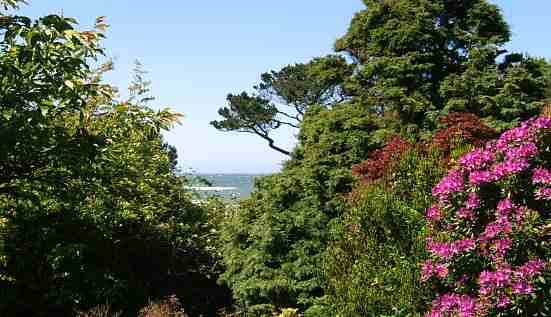
So with Cestyll Garden you have the chance to get a feel of the real natural beauty of the island coastline. While so much changes all around, not least the advance of technology with the nearby power station, here Violet Vivian's vision lives on. So now, come and enjoy Cestyll Garden.
|





